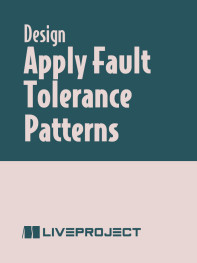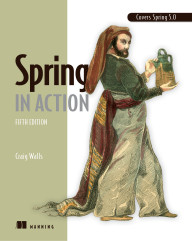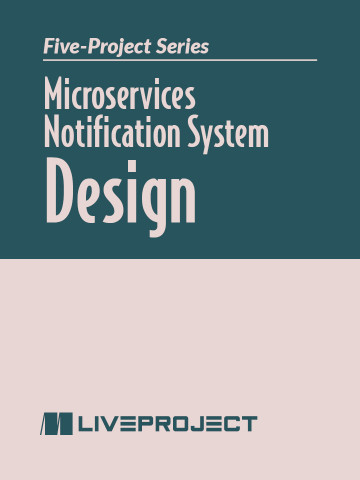- prerequisites
- intermediate Java • basic Spring
- skills learned
- implement a Spring Boot-based microservice • implement the Registry and Discovery capability using Spring Cloud Registry and Consul • configure the Spring Cloud Gateway which routes the requests to different backend microservices • implement Fault Tolerance frameworks to make the microservices resilient • implement tracing and monitoring of the microservices
pro $24.99 per month
- access to all Manning books, MEAPs, liveVideos, liveProjects, and audiobooks!
- choose one free eBook per month to keep
- exclusive 50% discount on all purchases
- renews monthly, pause or cancel renewal anytime
lite $19.99 per month
- access to all Manning books, including MEAPs!
team
5, 10 or 20 seats+ for your team - learn more

In this series of liveProjects, you’ll build a complete message notification system from scratch using Spring Boot and a microservices architecture. Stepping into the role of a software engineer working for a bank, you’ll design and implement a solution to handle the high-volume traffic of the bank’s notification management platform. You’ll get hands-on experience building microservices around event handling concepts and implementing service resiliency patterns. Complete every project in this series, and you’ll be ready to start creating loosely coupled and highly cohesive microservices.
here's what's included

In this liveProject, you’ll build the foundational notification services for a bank’s new notification management platform. Rather than build one single monolithic service, you’ll establish four separate microservices to handle notification preferences, notification formatting, the notification gateway that dispatches emails or SMS messages, and the application that orchestrates all of these functions. You’ll leverage Spring Boot and other Java services to help you create these microservices, which will form the bedrock of an entire notification platform.

In this liveProject, you’ll implement Service Discovery and Registry Modules so that the services of a bank’s notification management platform can dynamically register and be available for other services to discover at runtime. You’ll make use of the Spring Cloud Registry to register your services before you configure healthy endpoints and set up discovery.

In this liveProject, you’ll set up and configure a Spring Cloud Gateway to act as an entry point for applications to connect to a notification management platform. Spring Cloud Gateway provides a flexible way of routing requests based on criteria, and focuses on cross-cutting concerns such as security, resiliency, and monitoring. It’s the perfect API gateway to implement complexity separately from the client.

In this liveProject, you’ll leverage the Spring Cloud Resiliency libraries to improve the fault tolerance of the microservices that make up a notification management platform. You’ll work to ensure that each microservice can easily recover from failure, avoiding cascading failures and guaranteeing that other microservices in the system will be unaffected by any individual failure.

In this liveProject, you’ll use powerful libraries like Spring Cloud Library Sleuth, Zipkin, and Actuator to help find and debug an error in the microservices of a notification management platform. The distributed nature of microservices makes them challenging to debug, and finding where a problem occurs can be maddening. You’ll set up monitoring services that can use correlation IDs to link together transactions across multiple services, aggregate log data from various services into a single searchable source, and visualize the flow of a user transaction across multiple services.

team
- five seats for your team
- access to all Manning books, MEAPs, liveVideos, liveProjects, and audiobooks!
- choose another free product every time you renew
- choose twelve free products per year
- exclusive 50% discount on all purchases
- renews monthly, pause or cancel renewal anytime
- renews annually, pause or cancel renewal anytime
-
![]() Microservices Notification System Design project for free
Microservices Notification System Design project for free
Prerequisites
This liveProject is for intermediate Java programmers who know the basics of Core Java and Spring Boot. To begin this liveProject, you will need to be familiar with the following:
- Intermediate Java
- Beginner Spring Boot
- Intermediate Spring Framework
- Intermediate Maven
- Beginner Swagger
- Beginner H2 Database library
- Beginner Thymeleaf
- Beginner microservices
- Beginner Service Resiliency Spring Boot
 features
features
- Self-paced
- You choose the schedule and decide how much time to invest as you build your project.
- Project roadmap
- Each project is divided into several achievable steps.
- Get Help
- While within the liveProject platform, get help from fellow participants and even more help with paid sessions with our expert mentors.
- Compare with others
- For each step, compare your deliverable to the solutions by the author and other participants.
- book resources
- Get full access to select books for 90 days. Permanent access to excerpts from Manning products are also included, as well as references to other resources.



 Microservices Notification System Design project for free
Microservices Notification System Design project for free